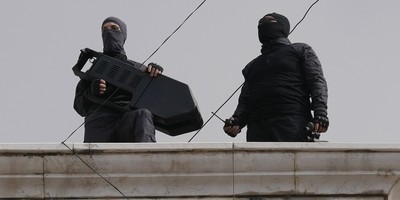Presidential debates, especially the intra-party variety we are witnessing these days, are frequent to the point of becoming common place, if not benign. They seem to prove what Marshall McLuhan said about medium equaling message. The recent gotcha-fest between Hillary Clinton and Barack Obama could make even the wildest political animal long for the days when debates were fewer and farther between.
Or at least interesting.
I’ve found myself longing a bit for those sixteen silent years between 1960 and 1976, when debates weren’t part of presidential campaigns. In fact, they were rarely mentioned at all. Maybe Lyndon Johnson and Richard Nixon were on to something.
In spite of abundant current evidence of forensic mediocrity, there does seem to be renewed interest these days in the gold standard for political debate – those serious and cerebral verbal exchanges between Abraham Lincoln and Stephen Douglas one hundred and fifty years ago. And, even though their experience was part of a campaign for a U.S. Senate seat, and not the White House itself, comparing that historic dialogue with what political debating has become in our age tempts one to switch the television channel to something with more depth.
Like a rerun of The Price is Right on The Game Show Network.
It actually took ninety years for what Abe and Steve did so well to even begin to impact modern American presidential politics. In 1948, Republican hopeful Harold Stassen debated Thomas Dewey before the Oregon Republican Primary. In 1956, Estes Kefauver debated Adlai Stevenson before the Florida Democratic Primary. And, of course, all modern day discussion of presidential debates inevitably includes a reference to the Kennedy-Nixon debates of 1960.
The first of those now legendary debates took place in Chicago on September 26, 1960. It was moderated by Howard K. Smith and watched on television by more than 70 million Americans. But, in fact, it really wasn’t their first debate.
Recommended
With this year’s Pennsylvania primary now on center stage, it’s interesting to note that Richard M. Nixon and John F. Kennedy had their very own Keystone state debate moment many years before – back in 1947.
The two young Navy war veterans were elected to Congress in 1946 – Kennedy from Massachusetts and Nixon from California. During their first days in congress, they were appointed to the House Education and Labor Committee and were, as Nixon later recalled, “like a pair of unmatched bookends.”
In April of 1947, they traveled to McKeesport, Pennsylvania, a coal mining and steel industry town of around 50,000 citizens at the time, located about fifteen miles from Pittsburgh, at the confluence of the Monongahela and Youghiogheny Rivers. They had been asked to debate before a Junto Forum (this kind of discussion-based group dated back to the days of Benjamin Franklin) and to argue the merits, or lack thereof, of a piece of legislation informally known as the Taft-Hartley bill (officially, it was “The Labor-Management Relations Act”).
This legislation had already passed the House and was at that time before the Senate. It was designed to rein in what was referred to at the time as Big Labor, and was the most successful of more than 200 similar bills proposed in the immediate aftermath of the war, as the country faced significant labor unrest. It would eventually clear the Senate and be vetoed by President Truman, who referred to it as a “slave labor” bill. His veto was then overridden and he actually found himself using the act a dozen or so times during his presidency.
The debate took place at the Penn McKee Hotel, with about one hundred and fifty people in the audience. Nixon spoke in strong support of the bill. Kennedy was opposed - but not without commending certain aspects of the legislation. Chris Matthews in his 1996 book – “Kennedy & Nixon: The Rivalry that Shaped Postwar America”- suggested that the crowd clearly favored Kennedy (being a largely blue-collar and pro-labor district) and that the catcalls from some had been so fierce that “a local business leader felt called upon to apologize to the Republican congressman in writing.”
But Kennedy saw it differently. In October of 1962, just three days before he would see the first photographic evidence of the Soviet missile build up in Cuba, President Kennedy returned to McKeesport. In his speech that day at their City Hall, he recalled: “The first time I came to this city was in 1947, when Mr. Richard Nixon and I engaged in our first debate. He won that one, and we went on to other things.”
Indeed.
It’s a fascinating little bit of history in preview – a joint appearance of these two young men with such compelling and interrelated futures ahead of them.
Following their debate that evening long ago, the two future fierce opponents made their way to the town’s Star Diner to eat hamburgers and talk about baseball. They were killing time before heading to the train station to catch the midnight Capital Unlimited back to Washington.
Sharing a compartment on the train, they drew straws to see who got the lower berth. Nixon won that one too.
By all accounts, Mr. 35 and Mr. 37 talked long into the wee hours of the morning about the issue that most resonated with them – foreign policy. The Cold War was underway, and these two men who would play such vital roles during its most critical moments, contemplated their world.
If only we had a transcript of THAT debate.
























Join the conversation as a VIP Member